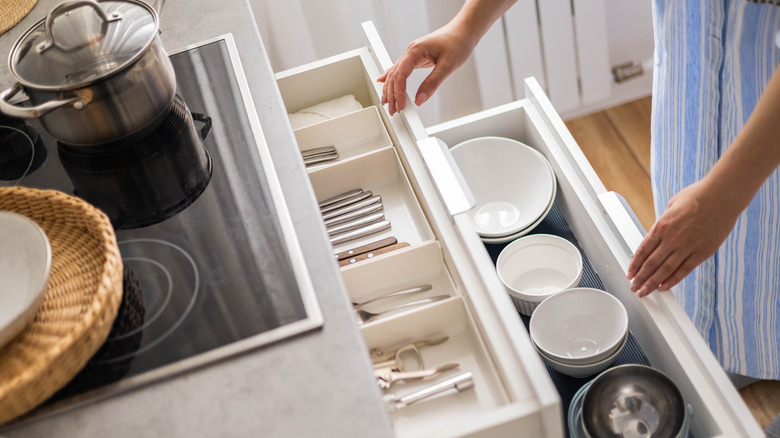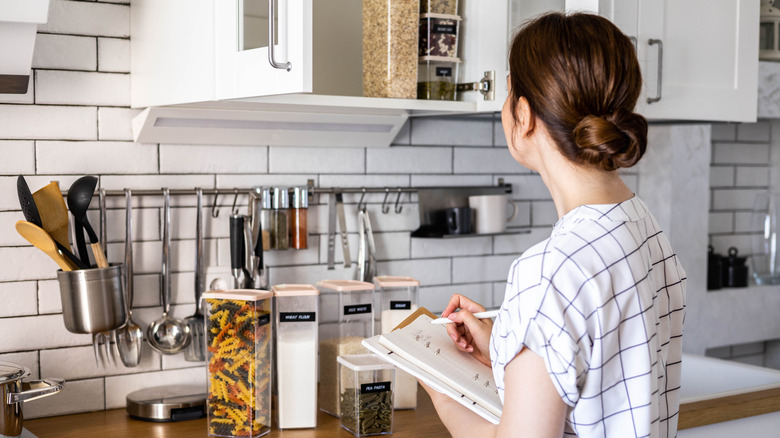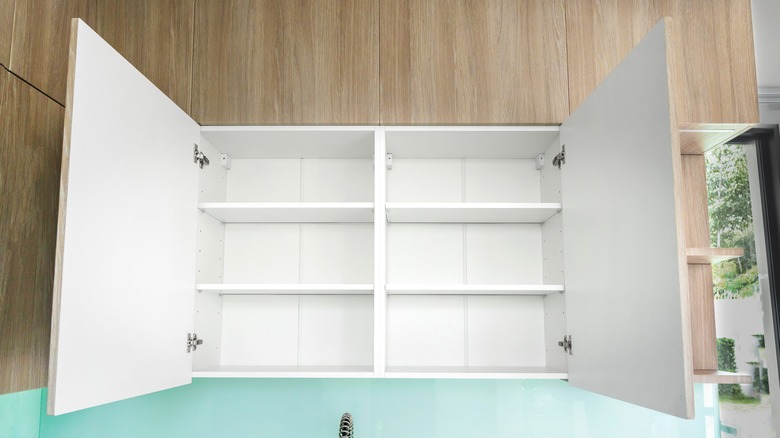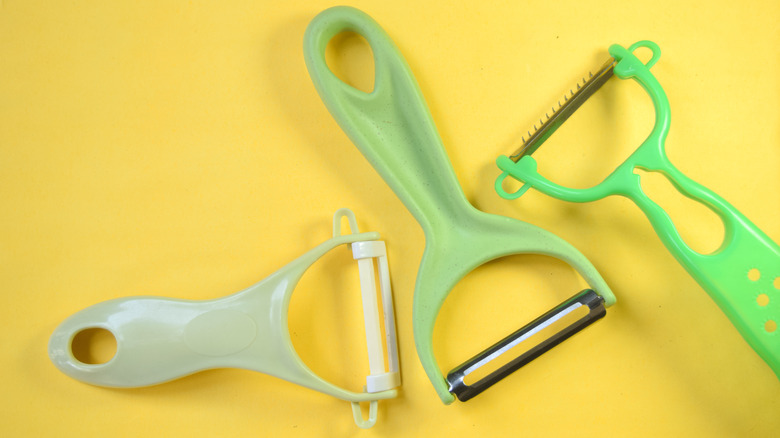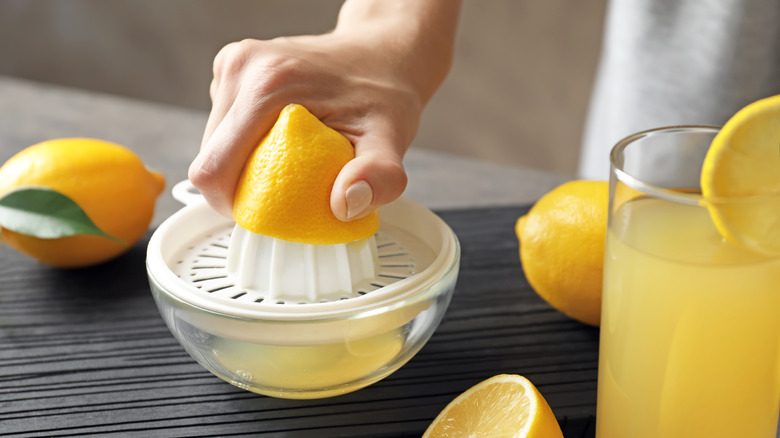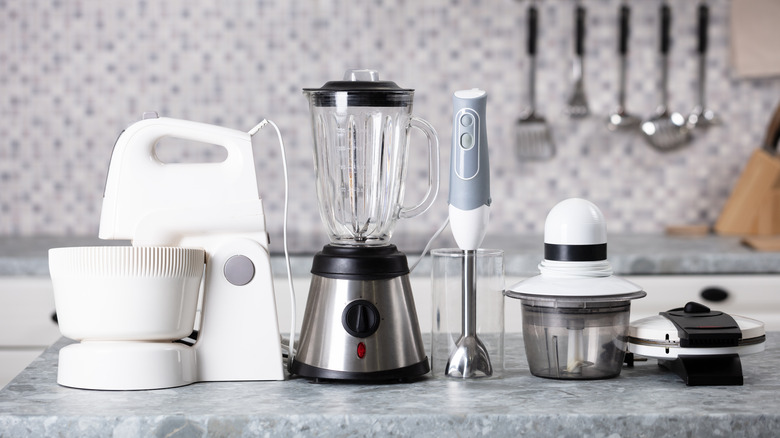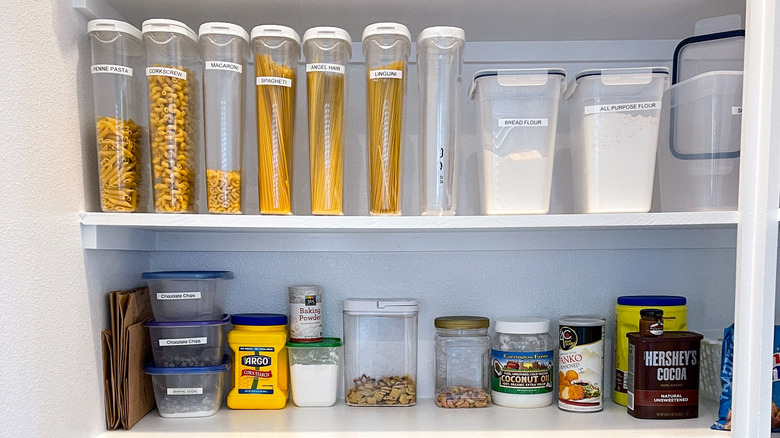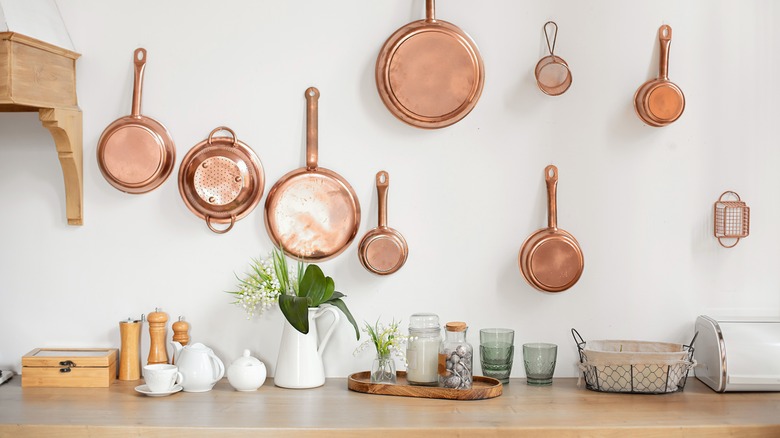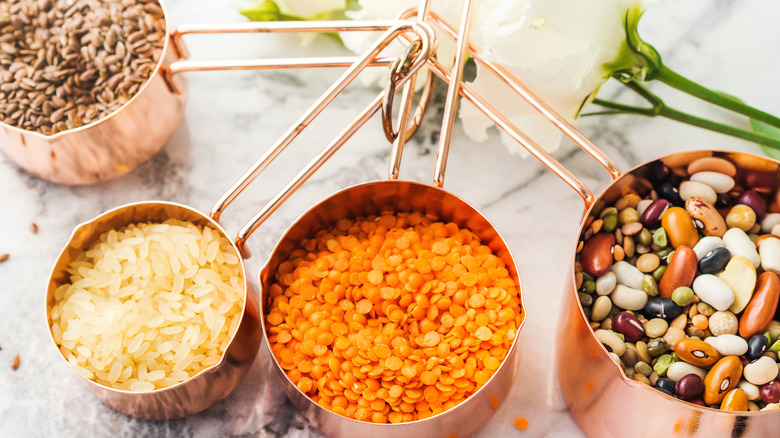How To Downsize Your Kitchen
Downsizing and minimizing the items you have in your home isn't a new concept, but it's become more popular as of late. This simple act of pairing your current items down and keeping only the essentials is proving to be worthwhile, and one room that can definitely benefit from this kind of attention is the kitchen. This is one of the most trafficked and used areas in the home and if you're not careful, kitchens can become a hoarding ground for things we don't always need or use.
And we're not only talking about appliances. This covers dining ware, cookware, and even food items. When you embark on downsizing your kitchen, it's important to remember a few key things like what you actually use compared to what you intend to use. Everyone cooks differently, so what you need will vary. That's why we have some helpful tips to guide you in downsizing your kitchen efficiently.
Set realistic goals and deadlines
When you choose to downsize your kitchen, the first step is to set a goal for yourself. This is imperative because, depending on the size of your kitchen and your overall plan, you may need to split the task up between several days or even weeks. Let's say, for example, you want to be done with your downsizing by the end of March. You'll want to reverse engineer and determine specifically when you're going to work on it and for how long.
Use small milestones to keep you on track like a set plan to dedicate two hours to downsizing every Saturday. Or, another option could be decluttering for 30 minutes every weeknight until you're done. But outside of timing goals, you can also set specific goals like finishing purging your pantry by mid-month or sorting through your pots and pans by Thanksgiving. Maybe you plan to tackle a certain number of drawers or cabinets per weekend. When you give yourself specific and realistic goals and deadlines, you'll find it easier to stick with your downsizing plan.
Remove everything and group like items
Ask many professional organizers and they'll say that the first thing you need to do when downsizing is to remove everything from the area you're working in. Now it may be impossible to remove everything from your kitchen, so focus on one section at a time. If you're going to focus on pots and pans today, remove all of them from the cabinets and sort them into large tubs. Or, if you're working on small appliances, gather them together on a table in another room. This method helps you see the storage space you have to work with. It also helps you see how many similar products you own.
The second step is to group like items together. Place utensils with other utensils, leftover containers with leftover containers, and pots with pots. This gives you an idea of just how much you own in each category. This can also give you a clear picture of how much space these things take up. Your kitchen's cluttery feel may be that things are simply stored in too small of spaces — making them impossible to organize. So, combined with a clear view of your kitchen storage spaces, you can determine the ideal storage spot for every set of items.
Get rid of multiple items
After you group like items together, focus first on getting rid of multiples. Many people are guilty of buying too many of the same thing and end up crowding their kitchens with duplicates. So take a good, hard look at your pile and sort multiples together. How many potato peelers do you have? What about whisks or thermometers? While it's perfectly fine to have duplicates of some items, over two of each can be a little excessive and takes up a lot of space. However, if you have a large household or cook a lot throughout the day, having three or four duplicates of certain tools can be convenient. Keep your individual needs in mind when selecting the ideal number.
Once you have your multiples together, it's time to downsize them. When doing this step, focus on the best of the bunch. Don't just pick randomly and choose that one to toss. Make sure you're keeping the one that works the best. This will save you money from having to buy a replacement and time as it will do the job it was created to do. If you find the quality and performance identical, keep the smaller option that takes up less space.
Be conscious of single-use gadgets
Sorting like items together will also show you how many single-use gadgets you own. While there is nothing wrong with products that do specific things like a lemon juicer or avocado peeler, what you need to ask yourself is, "Do I actually use this?" We've all been intrigued by items that make doing a certain task easier, but more often than not those single-use gadgets are barely used more than once. Downsizing these items can open up a ton of space in your kitchen and you'll find you can do the job with a simple paring knife or regular peeler.
When deciding what single-use gadgets to keep, you want to focus on the ones you use the most frequently. For example, if you only use a lemon juicer in the summer, you can opt to keep it or downsize it. But, if you find you use it all year round because you love making homemade lemonade, then it's a definite keeper. However, if you bought it several months ago and haven't even opened it, chances are you won't and it can be downsized without feeling like you're missing out.
Cut back on appliances
Appliances, like single-use gadgets, do one thing better than the rest. Think of all the specialty appliances on the market today. There are pasta makers, ice cream makers, juice blenders, frothers, mug warmers — the list goes on. And while none of these appliances are inherently bad, they take up valuable space in your kitchen, especially if you're not using them. That's why when downsizing your kitchen, inspect your current list of appliances, big and small, and be picky. If you like smoothies, but find you use your regular blender more than the specialty one, declutter the latter.
Take stock of any appliances that are still unopened in the original box. Bring them somewhere visible and ask yourself, "Will I use this in the next few months?" If your answer is no, say goodbye. Too often people keep things for those just-in-case days, but there's a pretty slim chance that day will come. If you're struggling with determining what to keep, having hard and fast guidelines can help. If you haven't used it in the last year, get rid of it. Decluttering experts The Minimalists swear by another simple rule you can try — if you can replace the item for $20 in under 20 minutes, you can declutter it.
Rethink storing entire dish sets
Another obstacle people face when downsizing their kitchen is the fear of breaking up dish sets. If you were gifted or bought a dining ware set and you only use half of it, what's stopping you from getting rid of the rest? You're probably afraid of needing a backup if a piece gets chipped or broken. Or maybe you think you need it for dinner parties you hope to host in the future. This is another example of the just-in-case moment. You can opt to donate or sell the pieces of the set that you never use. Or, think of alternative storage options if you don't want to part with them. Floating shelves are a great out-of-the-way option for storing rarely used dishes throughout the home. You can still use them when needed and they'll double as decor in the meantime.
If you've inherited a set of China, consider how often you'll use it when determining its ideal storage spot. Keeping it in much-needed cabinets to pull out for seldom guests or holidays is a waste of space. Instead, consider other places in your house that aren't as convenient to stash these items. Carefully wrap the pieces in bubble wrap and store them in bins in the basement or closet. That way, you can reserve your easier-to-access kitchen cabinets for items you use more frequently.
Don't forget to check the pantry
Once your gadgets and dining ware are downsized, it's time to look through the pantry. This is an area people neglect to check because they may not always feel it's part of the kitchen. But since the pantry tends to house food, spices, and condiments, make sure to add it to your downsizing plan. When organizing your pantry, do the exact same steps as above. Remove everything and group like items together.
From there, focus on expired foods first. Discard them immediately to reduce the items you'll need to sort through. Next, check for excessive duplicates. It's fine to have a few cans of vegetables but make sure you'll eat them before the expiration date. The same goes for items like flour, salt, pepper, and other spices. It's okay to have one or two backups, particularly for those you use all the time. But if you have multiple bottles of a spice you only use for rare dishes, chances are they'll expire before you use them again. Consciously prioritize using up these items by looking for recipes or making go-dishes with them. And, donate any unopened and unneeded items to the local food pantry or offer them up to friends and neighbors.
Focus on smart storage solutions
Downsizing your kitchen is only one half of the equation. The second half is using smart storage solutions for the items you're keeping. This is why professional organizers tell you to remove everything. Because when you see the space completely empty, you can brainstorm new ways to store your items. This is really important if the way you had it before hasn't worked out well for you. Some popular storage options for the kitchen include clear containers so you can visibly see when certain items are running low. Using containers and baskets can help you group like items together, such as baking goods, condiments, snacks, and more. Add labels to make putting items away easier for everyone in the home. And, look for uniform options to serve as functional organization containers that still look stunning and polished in your space.
Another area organizers say people underuse is cabinet and pantry doors. Install metal shelves or buy an over-the-door organizer to increase your storage. You can also buy shelf raisers or Lazy Susans. Finally, use whatever vertical space you have. Your walls can make for great storage solutions and all it takes is installing a few hooks for pots and pans. Old pipes and bins can be refurbished, hung up, and then used to store paper towels or cooking utensils. Your options are endless and you can find a ton of inspiring ideas online. Your ultimate goal with kitchen storage is to make things easy to find and simple to put away.
Replace items with multi-use products
Having lots of single-use gadgets and appliances can quickly make your kitchen feel cluttered. That's why multi-use products are your best bet, as they can serve many purposes while keeping your kitchen organized. The best part is you can get really creative with multi-use products. For example, a wooden cutting board can double as a charcuterie board when you host dinner parties. Measuring cups can make for useful ramekins when preparing meals and mixing bowls can work as serving bowls for dips and sauces.
When looking at multi-use products, you want to consider all the things you can do with them and make the smartest purchase for your needs. If you're in the market for a cheese grater, look for one with multiple grates that can also be used to shred veggies. As for cookware, find sets that offer an array of pot and pan sizes, but ones that can be used for multiple things. All-in-one pans are designed to boil, saute, and pan-fry. Plus, some even have integrated strainers. This can save you a ton of space while not sacrificing any food prep functionality.
